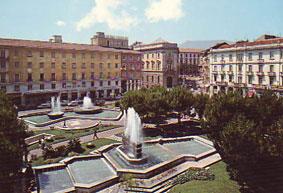


All the structures

Avellino is a wonderful city that seems ready to embrace its many visitors. A trip to Avellino is not complete without a visit to the cathedral. The cathedral contains a sixteenth-century wooden choir, and its facade is in neoclassical style.
It was erected in the twelfth century in honour of the Assumption of Mary. Inside the cathedral is a tabernacle by Giovanni da Nola. Other points of great artistic interest are the Clock Tower, the Fountain of the Three Cannoli, the Irpino Provincial Museum, the Montevergine Sanctuary and the Abbey Museum.
Mercogliano in the province of Avellino merits a visit. It is particularly known to pilgrims for the Montevergine Sanctuary located on Mount Parthenio, where a visit can also be paid to an exhibition of Nativity scenes from all over the world and a museum housing archaeological finds. In addition to the Sanctuary, allow time for a walk around the village of Mercogliano, medieval in appearance and with well-preserved sections of town wall.
The Regional Park of Monti Picentini is one of Avellino’s most valuable treasures. Part of the lands of both Montella and Bagnoli Irpino, the park is of great importance since it contains the largest basin of water in southern Italy. The park is mostly comprised of forested areas, and among its wildlife are hares, wild boar, rodents and foxes, while the golden eagle, peregrine falcon and goshawk roam the skies above.
In addition to its many nature trails enjoyed by nature lovers, Montella is known for its chestnuts. Cakes and many other local dishes honour this excellent local fruit, and food lovers should not miss tasting the traditional Christmastime ‘Castagne del Prete’.
Another of Montella’s excellent products is the black truffle. Among Avellino’s traditional wines are Taurasi and the renowned Greco di Tufo.
The only thing that remains is to come and discover the nature and flavours of the Avellino province.